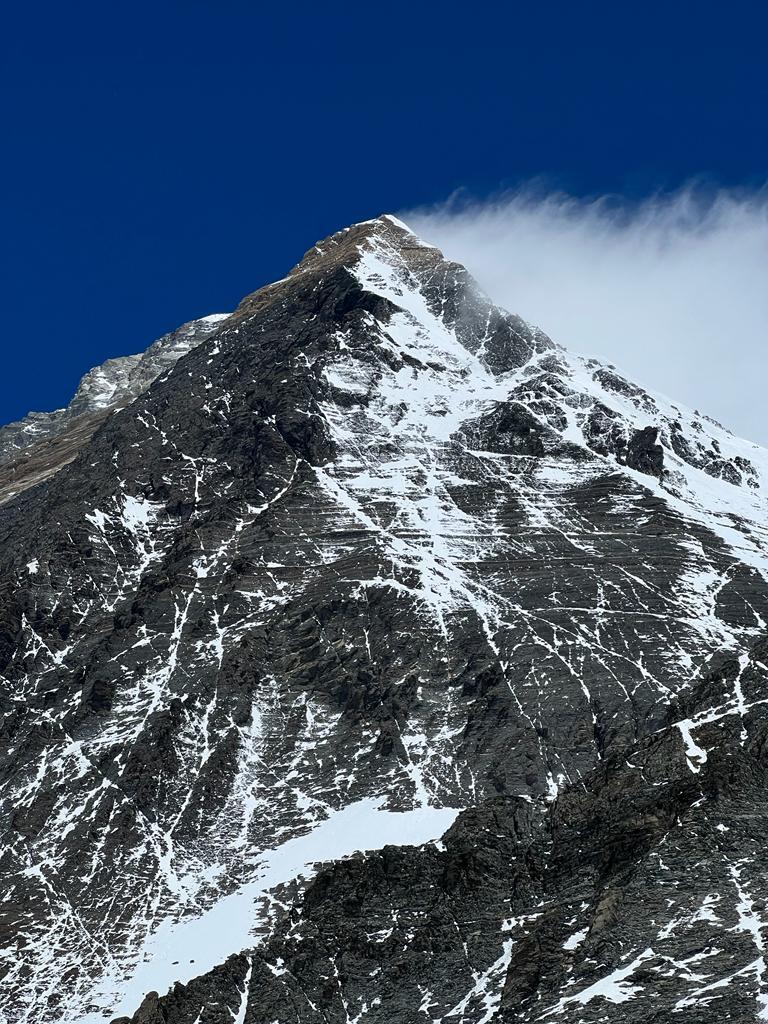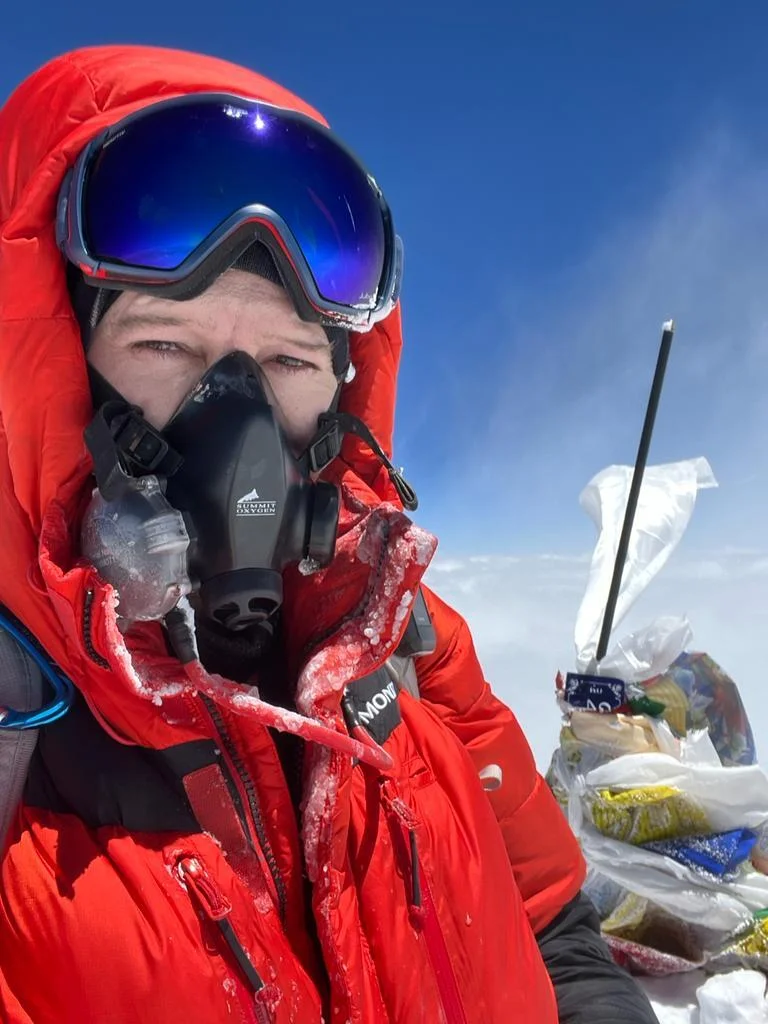Over the last couple of weeks, I have been taking you on a trip around the cardinal points of the Compass for Life model. We have explored the North, South and East cardinals. The north pointer of the Compass always points North, in this context pointing towards our Super North Star – a purpose to aim towards. I’m concluding my short blog series by heading West. The West cardinal is your Warrior, the strength of character needed to reach each milestone you have identified and set. It is the Warrior Spirit that governs your resilience and your ability to be focused, relentless and determined to succeed. It is about ‘showing up’ each day and finding the courage to step into the pressure zone.

Stepping into the ‘pressure zone’
The Warrior was the final piece of the jigsaw in my Everest journey. The combination of Strategy and Ethos had enabled me to get to the bottom of the mountain. As I lifted my gaze beyond base camp, I was going to have to call upon every ounce resilience and determination if I was to succeed.
West is the action-focused cardinal. As I stepped into the Khumbu Icefall and onto the mountain itself it was this cardinal that showed me the way. This was my pressure zone – and the time had come to dig deep ruthlessly execute my strategy.
Exercising your Warrior Spirit
In my previous blog post, I talked about how we need to exercise the qualities that we aspire to live by as if they were muscles. Our Warrior Spirit is no different. I had pushed myself hard during my physical preparation, particularly when I was on a training climb in Nepal earlier in the year. Although the mountain was a full 2km shorter in height than Everest, it perfectly encapsulated the phrase ‘train hard, fight easy’. With a base camp situated at a similar altitude to the summit of Mont Blanc and sustained technical climbing all the way to the summit, it required just as much commitment as Everest. This was the perfect arena in which to exercise my Warrior Spirit!

During this training climb I rehearsed the mantras and self-talk that I would employ when the going got tough on Everest. In the solitude of the high Himalayas, far away from the stressors of organising an expedition, I had time to revisit my ‘why’. I could tackle my fears, face the fear of failure, and stress test my ability to endure the pain and discomfort associated with high altitude mountaineering. I was looking for any possible signs and symptoms of a ‘quit gene’. If I was going give up in the high mountains it was better to find out here. From the summit I looked across to Everest – It would soon be time to translate this success across to the highest mountain of all.
“The key is not the ‘will to win’, everyone has that. It is the will to prepare to win that is important”
Bob Knight
Everyone at Everest Base Camp had the same goal. Some were successful, others were not. Some were prepared to risk all, others were more cautious in pursuit of their goal. Whilst it is true that I had to lean on my Warrior Spirit to push through obstacles on the way, in the mountains my Warrior Spirit had to be the dominant force. I had tested it in the high Himalayas, and it became a tool in my backpack that I would reach for every day on Everest. It was the cherry on top of all the preparation and hard work of the last two years.
The ‘pressure zone’ on Everest
On Everest, danger, pain and discomfort are constant companions. Altitude headaches, overwhelming cold (and even heat!), and coughing fits that stop you in your tracks, become the norm. Each day became the new ‘hardest day on the mountain’. When I thought that perhaps it was beyond me, I would tell myself.
‘Maybe you can’t make the summit – but you can take one more step.’
I utilised the mantras and self-talk that I had rehearsed previously and fell back on my visualisation exercises. I told myself that every step I took was literally getting me closer to my Super North Star. I knew that everyone that had summited before me, and all those that will summit after me, overcame the same fears, doubts, and hardship.

As we set out for the summit from our high camp at 8000m I was ready. We had made some good decisions which put us in a position to go for the summit in winds which weren’t considered dangerous and in temperatures of ‘only’ -30C. As we started up the steep snow and ice face in blackness of the early hours, I was carrying no injuries and felt rested and hydrated. By sunrise it was clear that we were making good progress. We had changed our oxygen cylinders and taken the time to have a hot drink and a snack. I took stock of our position: our fingers and toes weren’t freezing, we had sufficient oxygen for us to reach the summit and return to our high camp. Our kit and equipment was in good order and the weather looked promising. The only thing that could stop me now was giving up – and I knew I wasn’t going to quit. I knew now that I would summit Mount Everest.

‘The only thing that could stop me now was giving up – and I knew I wasn’t going to quit.’
As we crested the summit ridge I felt elated. Pasang, my sherpa companion, carefully wrapped a prayer flag around the summit cairn and knelt for a moment in prayer. We hugged, congratulated each other, and hugged again. We had stepped into the ‘pressure zone’ and won.
We sat together on the very top of the world and looked around us, the clouds thousands of feet below obscuring all but three peaks – Kanchenjunga, Lhotse, and Makalu – the 3rd, 4th and 5th highest mountains in the world. It was spectacular. For what seemed like forever we had the summit to ourselves, with a group of four climbers arriving as we prepared for our descent.

As I stood on the summit, the highest human being on the planet (being a full foot taller than Pasang!), my mind was awash with thoughts and emotions. I felt a great personal satisfaction at reaching the summit, but that feeling was dwarfed by an almost overwhelming sense of fulfilment and joy from the journey – the process. I thought back to my unsuccessful Everest expedition years earlier and was struck by the realisation that failure then was necessary for me to succeed now.
Soon it was time to set out down the summit ridge and back to the relative safety of the South Col. In my final glance back towards the summit, I was transported to that day 2 years earlier in the intensive care unit with my friend. I replayed the conversations that we had and was reminded that this Everest journey was part of a wider commitment to myself to stop simply accepting each day, week, year as it came. I had answered John F. Kennedy’s rallying call to ‘choose your destiny’. By following my Compass, I had become the ‘architect’ of my life and I was indeed living the life of my dreams.

Interested in finding out more about how Compass For Life can help your team or organisation successfully step into the ‘pressure zone’? Fill out our contact form or drop us an email.
